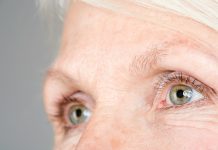
Stroke prevention is a critical health priority, as strokes are a leading cause of death and disability worldwide. One valuable tool in the fight against stroke is the carotid ultrasound, a non-invasive test that uses sound waves to create images of the carotid arteries in the neck.
These arteries are vital as they supply blood to the brain. By examining these arteries, doctors can assess stroke risk and take steps to prevent this life-threatening event.
Carotid ultrasound is especially important because it helps detect carotid artery disease, a condition where these arteries become narrowed by fatty deposits called plaques.
These plaques can reduce blood flow to the brain or become unstable and lead to clots that can block blood flow entirely, causing a stroke.
This imaging technique is straightforward and safe. During the procedure, a small handheld device called a transducer is placed on the skin of the neck.
The transducer emits high-frequency sound waves that bounce off the blood vessels and return echoes, which a computer then uses to create images of the blood vessels. The test does not involve radiation and usually takes about 30 minutes.
The primary reason doctors recommend a carotid ultrasound is to evaluate the presence and severity of plaque buildup in the carotid arteries.
It is often recommended for individuals who have risk factors for stroke, including high blood pressure, diabetes, high cholesterol, a history of smoking, or a family history of stroke or heart disease.
It’s also advised for those who have experienced symptoms that suggest a stroke or a mini-stroke (transient ischemic attack, TIA), such as sudden numbness or weakness, especially on one side of the body, trouble speaking, or sudden vision problems.
Research supports the effectiveness of carotid ultrasound in predicting stroke risk. Studies have shown that this test can help identify individuals who are at high risk of stroke due to significant narrowing of the carotid arteries.
In these cases, medical intervention can significantly reduce the risk of stroke.
Depending on the severity of the narrowing, treatments might include medications to lower cholesterol and blood pressure, lifestyle changes, or procedures to remove the plaque buildup, such as carotid endarterectomy (surgical removal of the plaque) or carotid artery stenting (placing a small, expandable tube in the artery to keep it open).
The benefit of early detection through carotid ultrasound is also seen in the ability to monitor the progression of artery narrowing.
For individuals already known to have some level of carotid artery disease, regular follow-up with ultrasound can help determine if the condition is worsening and if more aggressive treatment might be needed.
However, carotid ultrasound is not without its limitations. It is less effective at detecting blockages that are not yet large enough to significantly narrow the artery.
Moreover, not all plaque detected will lead to stroke, which means the decision to proceed with surgery or other interventions must be carefully considered based on the overall health and risk factors of the individual.
In conclusion, carotid ultrasound is a key diagnostic tool in the prevention of strokes. By allowing early detection and treatment of carotid artery disease, this simple, safe imaging technique can play a significant role in reducing the incidence of stroke.
For anyone at risk, discussing the potential need for a carotid ultrasound with a healthcare provider could be a crucial step towards maintaining long-term brain health and preventing stroke.
If you care about stroke, please read studies that diets high in flavonoids could help reduce stroke risk, and MIND diet could slow down cognitive decline after stroke.
For more information about nutrition, please see recent studies about antioxidants that could help reduce the risk of dementia, and tea and coffee may help lower your risk of stroke, dementia.
Copyright © 2024 Knowridge Science Report. All rights reserved.



